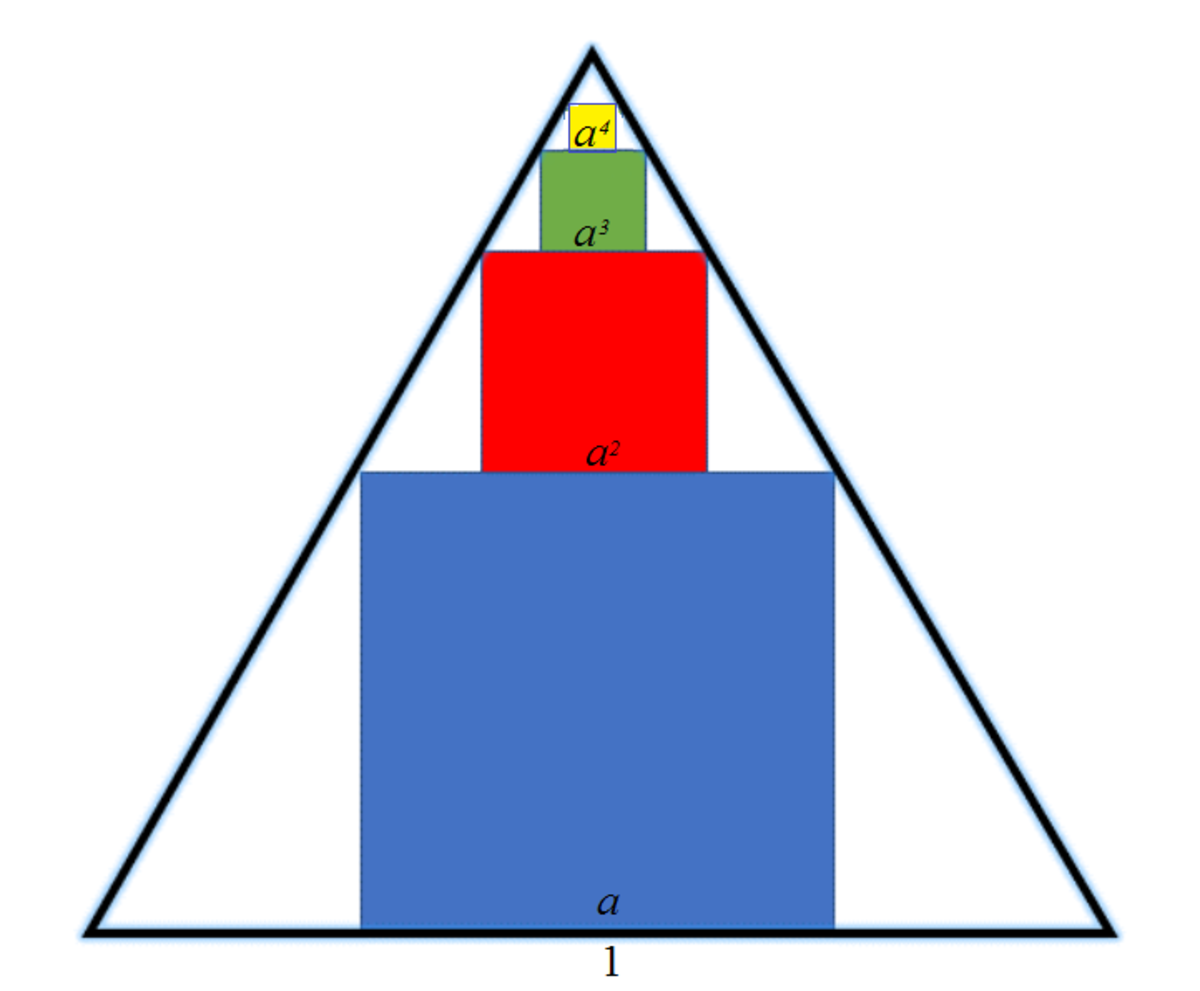Stacking Squares in a Triangle!

If we continue to stack squares inside an equilateral triangle of side length 1 . What is the total area of the squares?
Note : I upgraded an old problem of my posts by adding some animation.
This section requires Javascript.
You are seeing this because something didn't load right. We suggest you, (a) try
refreshing the page, (b) enabling javascript if it is disabled on your browser and,
finally, (c)
loading the
non-javascript version of this page
. We're sorry about the hassle.
4 solutions
Thank you.

Order the square from the large to small. Let the first square to have a side length of a . Then the ratio of side length of first square and the base of the triangle is 1 a . Because the pattern repeats, the ratio of the side length of the second side length and the base of second triangle is also 1 a = a a 2 . Therefore the side length of the second square is a 2 . That of the third is a 3 and so on. The the sum of areas of all the square is given by:
S A = a 2 + a 4 + a 6 + ⋯ = 1 − a 2 a 2 = 4 ( 3 3 − 5 ) 3 ( 7 − 4 3 ) = 8 3 ( 3 − 1 ) From 2 a tan 3 0 ∘ + a = 1 , we have a = 3 ( 2 − 3 ) , a 2 = 3 ( 7 − 4 3 )
Thank you.
I think you have a typo. Shouldn’t a 3 be replaced with a 3 2 = a 6
Yes of course. Here it is :
Area of the largest square is
( 3 + 2 3 ) 2 ,
the next smaller one is
( 3 + 2 3 ) 4 ,
and so on.
Hence the total area of all the squares is
( 3 + 2 3 ) 2 × 1 − ( 3 + 2 3 ) 2 1 =
4 ( 3 + 1 ) 3 = 8 1 ( 3 3 − 3 ) .
Thank you .
Thank you everyone for sharing your solutions.
Consider one trapezoid layer, where the short leg of one of the side triangles is x , which makes the side of the square 3 x .
Then the ratio of the area of the square to the area of the trapezoid is ( 3 x ) 2 + 3 x 2 ( 3 x ) 2 = 2 1 ( 3 − 3 ) .
Since this ratio is maintained for the infinite layers of trapezoids in the diagram, and since the area of the whole equilateral triangle is 4 3 ⋅ 1 2 = 4 3 , the sum of the areas of the stacked squares is 2 1 ( 3 − 3 ) ⋅ 4 3 = 8 1 ( 3 3 − 3 ) .